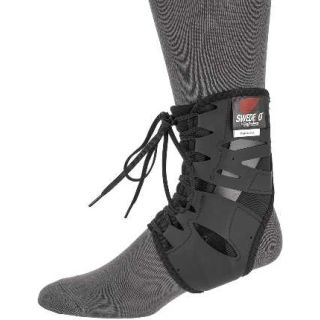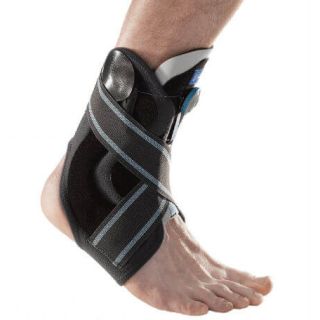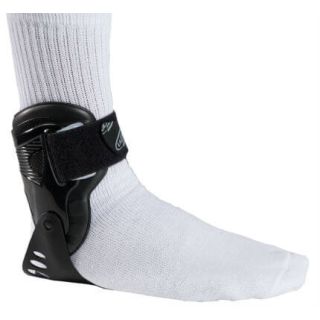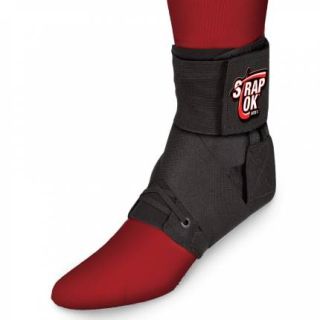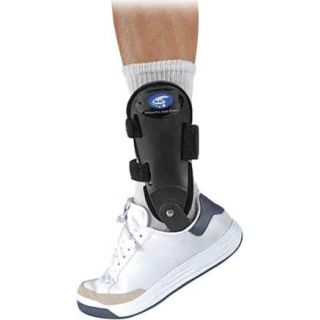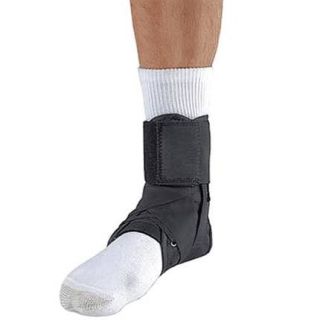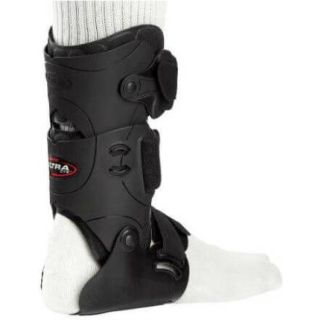Your Guide to Volleyball Ankle Braces and Supports
Volleyball is a dynamic and demanding sport that requires agility, speed, and precise footwork. When players engage in quick movements, jumps, and directional changes on the court, they can become susceptible to various injuries, particularly to the ankles.
Ankle injuries, such as sprains and strains, can significantly impact a player's performance and sideline them from the game. To mitigate these risks and support optimal performance, many volleyball players turn to ankle braces and supports.
This guide discusses the importance of ankle protection in volleyball. It also highlights the benefits of using ankle braces. Additionally, it provides guidance on selecting the appropriate ankle brace for your needs.
Understanding Ankle Injuries in Volleyball
Ankle injuries are among the most common injuries experienced by volleyball players. The nature of the sport, which involves frequent jumping, landing, and lateral movements, places significant stress on the ankle joints and ligaments. Common volleyball ankle injuries include:
- Ankle sprains: Ankle sprains occur when the ligaments surrounding the ankle joint are stretched or torn due to sudden twists or turns. These injuries can range from mild to severe and may result in pain, swelling, and instability.
- Tendonitis: Overuse of the ankle tendons, particularly the Achilles tendon, can lead to inflammation and pain, affecting mobility and performance on the court.
- Chronic instability: Recurrent ankle sprains or insufficient rehabilitation of previous injuries can contribute to chronic ankle instability, compromising balance and proprioception.
The Impact of Ankle Injuries on Performance
Ankle injuries not only cause physical discomfort and limitations but also have a significant impact on a volleyball player's performance and overall game experience. Some of the consequences of ankle injuries in volleyball include:
- Decreased mobility: Ankle pain and swelling can restrict a player's range of motion, making it difficult to move quickly and effectively around the court.
Reduced jumping ability: Ankle injuries may impair an athlete's ability to jump with power and confidence, affecting their performance in blocking, spiking, and defensive maneuvers.
- Loss of balance and stability: Instability and weakness in the ankles can compromise a player's balance and coordination, increasing the risk of falls and further injuries.
- Psychological effects: Dealing with the fear of reinjury or the discomfort of existing ankle issues can undermine a player's confidence and mental focus during games and practices.
The Role of Volleyball Ankle Braces and Supports
Volleyball ankle braces and supports are designed to provide stability, protection, and compression to the ankle joint, reducing the risk of injuries and enhancing performance on the court. These specialized braces offer several key benefits for volleyball players:
- Stability and support: Ankle braces help stabilize the ankle joint, reducing the risk of excessive inversion or eversion during jumps, landings, and lateral movements.
- Injury prevention: By providing external support to the ligaments and tendons surrounding the ankle, braces help prevent sprains, strains, and other common volleyball-related injuries.
- Compression and pain relief: Many volleyball ankle braces feature compression elements that help reduce swelling, alleviate pain, and promote faster recovery from minor injuries and overuse conditions.
- Enhanced proprioception: Some ankle braces are designed to enhance proprioception, or the body's awareness of its position in space, improving balance, agility, and coordination on the court.
- Confidence and peace of mind: Wearing a supportive ankle brace can instill confidence in volleyball players, allowing them to focus on their performance without worrying about potential ankle injuries or instability.
Types of Volleyball Ankle Braces
Volleyball ankle braces come in a variety of styles and designs, each offering unique features and levels of support. When selecting an ankle brace for volleyball, it is essential to consider factors such as the severity of previous ankle injuries, personal comfort preferences, and compatibility with volleyball shoes. Common types of volleyball ankle braces include:
- Lace-up ankle braces: Lace-up braces feature adjustable laces or straps that allow for a customized fit and compression level. These braces provide moderate to high levels of support and are suitable for players with a history of ankle instability or recurrent sprains.
- Sleeve-style ankle braces: Sleeve-style braces are made of breathable, stretchy fabric that conforms to the shape of the ankle. These braces offer mild to moderate support and are ideal for athletes seeking lightweight, low-profile protection during games and practices.
- Stirrup ankle braces: Stirrup braces feature rigid side supports that stabilize the ankle joint while allowing for full range of motion. These braces are effective for preventing inversion and eversion injuries and are commonly used by volleyball players who require maximum support without sacrificing mobility.
- Strapping techniques: In addition to traditional ankle braces, some volleyball players utilize taping and strapping techniques to reinforce the ankle joint and prevent injuries. Athletic trainers and medical professionals can apply specialized taping methods tailored to individual needs and injury patterns.
Choosing the Right Volleyball Ankle Brace
Selecting the right volleyball ankle brace requires careful consideration of various factors, including the player's injury history, level of competition, and comfort preferences. Here are some tips for choosing the most suitable ankle brace for volleyball:
- Consult with a healthcare professional: Before purchasing an ankle brace, volleyball players should consult with a sports medicine physician, physical therapist, or athletic trainer to assess their ankle health, identify any underlying issues, and receive personalized recommendations for brace selection and usage.
- Consider the level of support needed: Players with a history of severe ankle injuries or chronic instability may benefit from higher-support braces, such as lace-up or stirrup braces, which offer maximum protection and stability. Athletes with mild to moderate ankle issues may find sleeve-style braces or strapping techniques sufficient for their needs.
- Evaluate comfort and fit: Ankle braces should fit snugly but comfortably around the ankle without causing excessive pressure or restriction. Players should try on different brace styles and sizes to find the most comfortable and secure fit that allows for free movement and ventilation.
- Assess compatibility with volleyball shoes: It is essential to ensure that the chosen ankle brace is compatible with volleyball shoes and does not interfere with proper fit or performance. Players should test the brace with their preferred footwear to confirm compatibility and comfort.
- Consider durability and maintenance: Volleyball ankle support should be durable enough to withstand the rigors of frequent use and washing. Players should choose braces made of high-quality materials that offer durability, breathability, and easy maintenance.
Incorporating Ankle Braces into Volleyball Practice and Competition
Once volleyball players have selected the appropriate ankle braces, it is essential to incorporate them effectively into their training regimen and game-day routine. Here are some tips for integrating ankle braces into volleyball practice and competition:
- Gradual adaptation: Players should gradually acclimate to wearing ankle braces during practice sessions and scrimmages to allow time for adjustment and adaptation to the new sensation and movement restrictions.
- Proper application: Athletes should follow manufacturer guidelines and healthcare professional recommendations for properly applying and adjusting ankle braces to ensure optimal support and protection during play.
- Consistent usage: Volleyball players should wear ankle braces consistently during practices, games, and high-intensity training sessions to maintain stability and reduce the risk of injuries throughout the season.
- Regular monitoring: Players should regularly monitor their ankle health and brace functionality, paying attention to any signs of discomfort, skin irritation, or reduced support. Replace worn-out or damaged braces promptly to maintain optimal support for your ankles.
Volleyball ankle braces help by providing added support and protection for ligaments that are often injured while playing. For players with previous ankle sprains, active ankle braces for volleyball can prevent rollover injuries that can occur while digging, spiking, or setting.
 Details$64.99 $52.99
Details$64.99 $52.99 Details$29.99 $22.99
Details$29.99 $22.99 Details$37.99 $29.99
Details$37.99 $29.99 Details$72.99 $64.99
Details$72.99 $64.99 Details$146.00 $146.00
Details$146.00 $146.00 Details$37.99 $29.99
Details$37.99 $29.99 Details$88.00 $88.00
Details$88.00 $88.00 Details$88.99 $79.99
Details$88.99 $79.99 Details$29.99 $25.70
Details$29.99 $25.70 Details$251.00 $251.00
Details$251.00 $251.00 Details$29.99
Details$29.99 Details$42.99 $34.99
Details$42.99 $34.99


